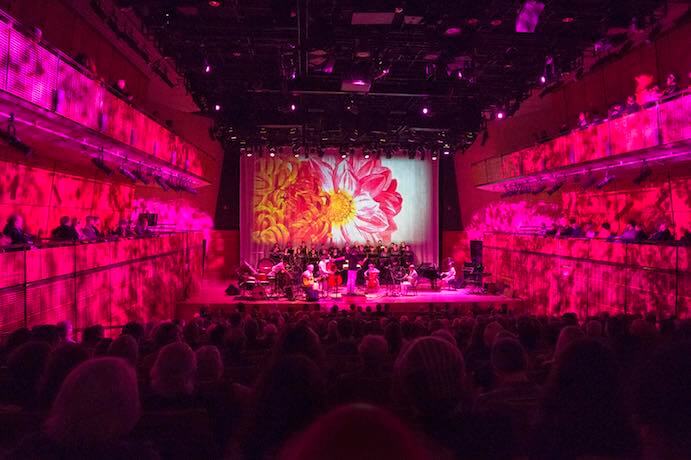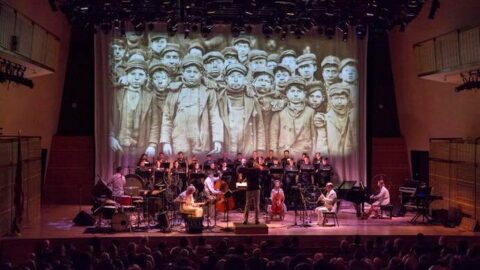Julia Wolfe’s Pulitzer-prize winning oratorio Anthracite Fields returned to New York City and a full house on December 1st, 2018 for its Carnegie Hall debut. Since premiering in 2014, the work’s revelation of Pennsylvania Anthracite Coal Region culture found an unexpected resonance both in the United States and abroad, and Wolfe has come to anticipate the stories and familial connections that each performance generates. The 9 PM Late Nights at Zankel Hall crowd proved eager to hear the acclaimed piece in its updated multimedia presentation, and in return, Carnegie offered the Bang on a Can All-Stars and Choir of Trinity Wall Street directed by Julian Wachner.
The oratorio’s five movements reveal a community as wealthy in interdependence and character as they were endangered in their line of work. Children’s street rhymes, family gardens, and names ringing of rich heritage mingle with underage labor and fatal mining accidents. The first movement, “Foundation,” juxtaposes a dramatic choral chant of a list from the Pennsylvania Mining Accident index (limited to Johns with one-syllable last names, 1869-1916) with light-hearted whistling. Behind the choir, Jeff Sugg’s cinema-sized scenography and projection design acclimated the audience to Anthracite Fields’ historical locale through laborer portraits, Pennsylvania terrain, and mine diagrams. Brilliant light beams synchronized with pianist Vicky Chow’s occasional outbursts and flashed into modern aesthetics.

“Breaker Boys,” fueled by punchy children’s street rhymes and an explosion of rock ‘n roll, captures the endless tumble of coal down to young boys who removed debris with their bare hands. The children pictured in projections “didn’t dare quit, because it was something to have a job at 8 cents an hour,” and the Bang on a Can All-Stars rocked with punk indignance.
The labor situation gained national attention when John L. Lewis, head of the United Mine Workers of America, reprimanded the House Labor subcommittee for enjoying the benefits of coal without protecting its producers. “Because we live in comfort, we owe protection to those men and we owe the security to their families if they die,” he bellowed via the Choir of Trinity Wall Street. The moment is a vortex of the preceding movements’ gentle horror and multi-genre exuberance: “I believe, I believe, I believe.”
Another list: this time, the “Flowers” that women grew to beautify the community. Mark Stewart revealed Wolfe’s folk roots on classical guitar, drawings of bulbs and blooms filtered onstage, and Zankel Hall was suddenly awash in fluorescent pink light. The shock revealed the palette Suggs had expertly threaded through the work: black soot, white ash, green fields, and pink flowers. His gently paced videography and color environment was a beautiful augmentation of the oratorio’s poignancy, and offset the dampening effects of Zankel Hall acoustics and a blasé choral performance.

A few years ago, the future of the American coal industry flavored national vitriol and made Anthracite Fields a touchstone for civil discourse. At the close of 2018, it is its portrait of America’s labor profiteering, immigrant character, and treatment of vulnerable children that gives pause. For all its implications, however, Anthracite Fields remains a gravely entertaining tribute to the courageous Americans who powered modernization.
























